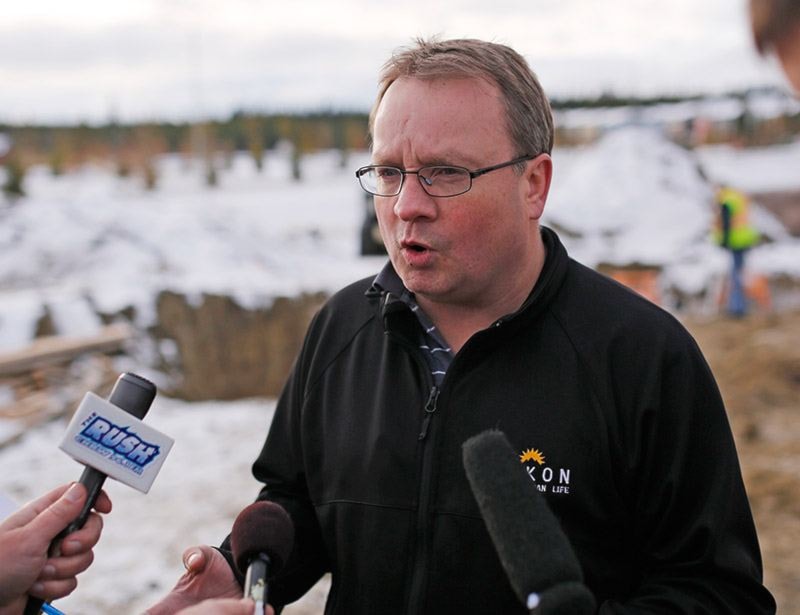The first part of Yukon’s election campaign has been flush with spending announcements from all three major political parties.
Those include an $80-million commitment for building retrofits from the Yukon Party, a $50-million renewable energy fund promised by the NDP and a recently announced $10-million infrastructure investment fund from the Liberals.
But the parties have all remained cagey on one point: whether they will consider running a deficit or borrowing money to fund those spending promises.
The current government has spent down the Yukon’s accumulated cash in the bank from $223 million in 2014-15 to $57 million this year, something the next government — no matter its political stripe — will have to contend with. It will also have to reckon with the fact that health transfer payments from Ottawa are increasing at a lower rate than they once did — less than three per cent per year in the last couple of years, compared to more than six per cent per year before 2014.
The Conference Board of Canada recently predicted that the territory will run a $30-million deficit next year and will continue to post deficits until 2022. It also predicted that Yukon’s GDP will decline by 7.7 per cent next year.
At the moment, none of the parties say they will run a deficit, but none seems willing to rule out the possibility, either.
The Yukon Party has promised not to raise taxes if re-elected. The government’s spring budget projected a $20-million surplus in the next fiscal year — up from an estimated $9-million surplus this year — which it would achieve largely by cutting spending on capital projects.
In fact, budget documents indicate the Yukon Party government was planning to cut capital spending by 30 per cent by 2019.
On Tuesday, Yukon Party MLA Scott Kent said the party’s $80-million building retrofit program will be included in that capital budget over the next five years. But that one commitment alone would take up a significant chunk of the projected capital spending that isn’t already committed to big, multi-year projects like the Whistle Bend continuing care facility. That leftover capital allotment is currently pegged at just under $50 million next year, rising to $100 million in 2019.
The Yukon Party didn’t confirm whether it still plans to run a surplus in response to a request from the News, though Kent said balancing the budget is “very important” to the party.
“The projections… are conservative in their estimate of future years,” a spokesperson wrote. “This allows government the wiggle room to maintain no net debt while continuing consistent levels of capital investment.”
For their part, the Liberals have criticized the Yukon Party for planning such large cuts to capital spending, but have not said clearly what they would do differently. The party plans to cut corporate taxes to the tune of $3 million to $5 million a year, and Porter Creek South candidate Ranj Pillai said last week there is “no plan” to run a deficit.
Pillai suggested the Liberals’ corporate tax cuts could actually increase government revenue by stimulating growth in the private sector, channelling a controversial economic theory made popular by the Reagan administration in the 1980s.
But even if the Liberals avoid a deficit, they haven’t ruled out taking on debt. In an interview with Yukon News columnist Keith Halliday for Northwestel Community TV, Liberal Leader Sandy Silver suggested the party would consider borrowing money to take advantage of new federal infrastructure funding. The Yukon government must put up one dollar for every three dollars of federal cash.
“In those certain circumstances, we would have to consider that,” Silver said.
The NDP is the only one of the three major parties looking at a tax increase, as it hopes to use $3 million each year in carbon tax revenue to help pay for its $50-million renewable energy fund. The rest will come out of the annual transfer payment increases, according to a spokesperson.
But last week, NDP Leader Liz Hanson wouldn’t say whether she plans to balance the budget, because she hasn’t been able to look at the government’s books.
“I don’t know what the budget would be,” she said.
Contact Maura Forrest at maura.forrest@yukon-news.com
